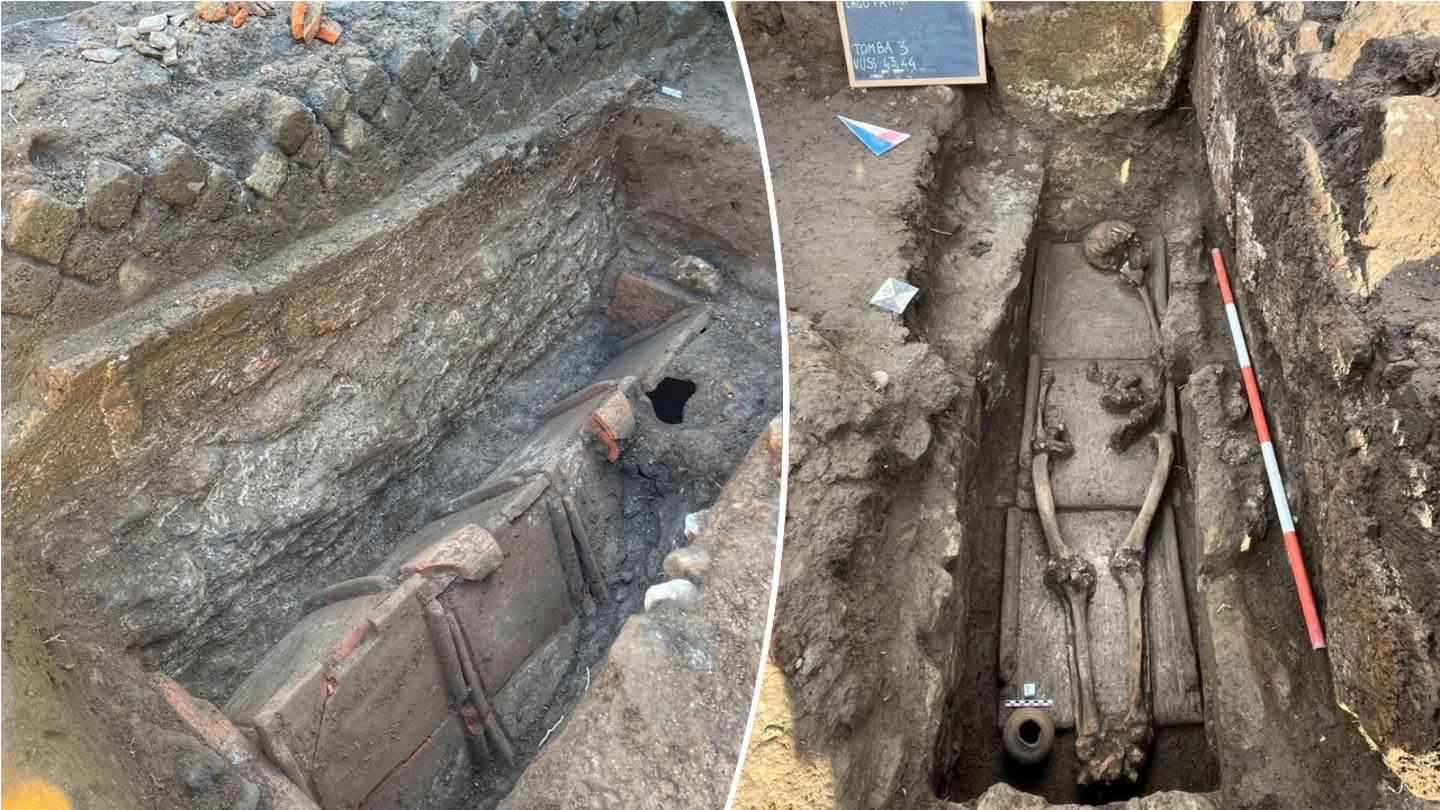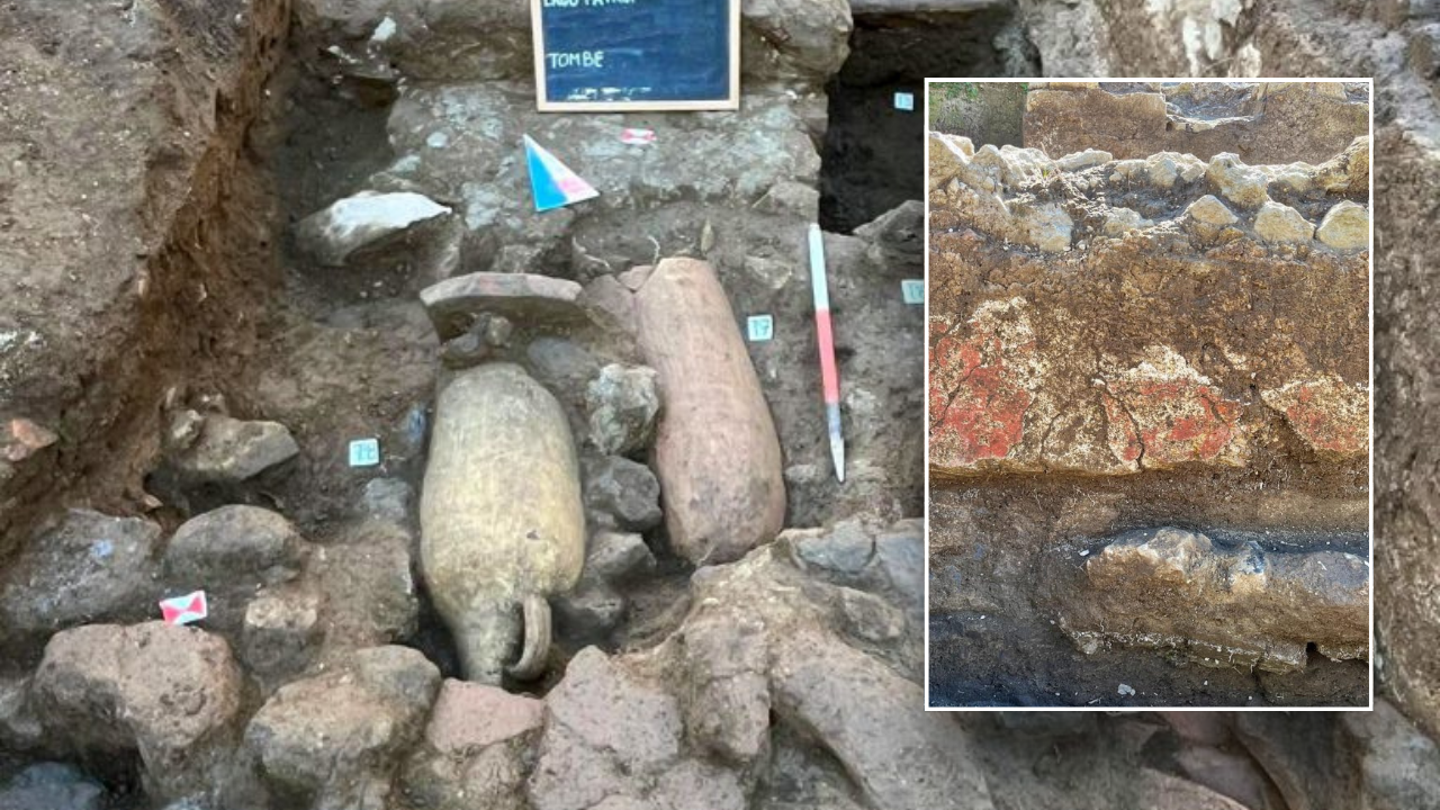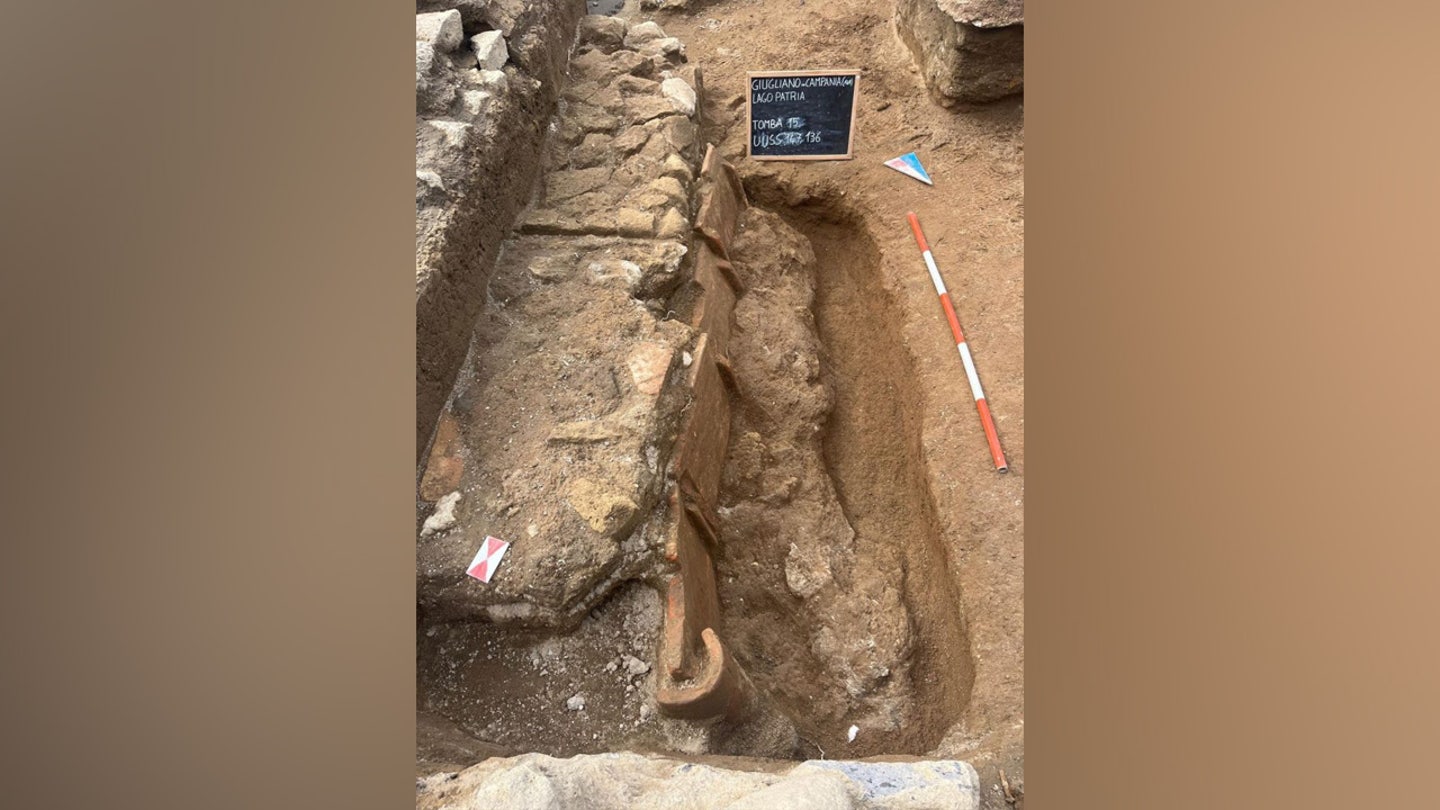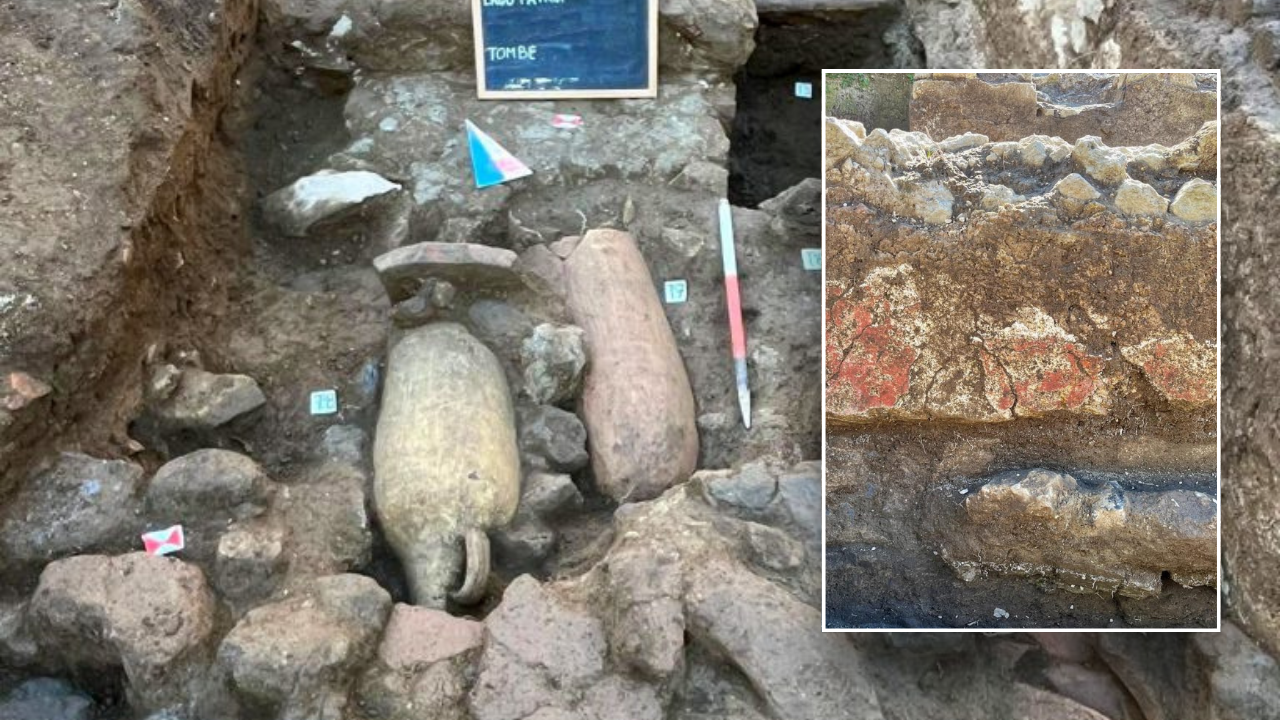Italian archaeologists recently unearthed ancient Roman tombs during the excavation of a necropolis – including one bearing the epitaph of a gladiator.
The discovery was announced by the Archaeology, Fine Arts and Landscape (ABAP) Superintendence for the Metropolitan Area of Naples on March 21.
In a statement translated from Italian to English, officials said that the dig took place in Liternum, an ancient town near the city of Giugliano in Campania.
ARCHAEOLOGISTS UNCOVER PROOF OF ANCIENT BIBLICAL BATTLE AT ARMAGEDDON SITE: ‘EXCEPTIONAL PHENOMENON’
The excavation site was used as a necropolis from roughly the first century B.C. to the third century A.D.
Italian officials highlighted two funerary enclosures that still contained fragments of white cladding plaster “with a more recent decoration phase in red, separated by a closed space, and a very deep masonry well,” the press release said.

Italian archaeologists uncovered ancient Roman tombs, one of which features a gladiator’s epitaph. (ABAP Superintendency for the Metropolitan Area of Naples)
“One of the enclosures preserves in the center a quadrangular mausoleum…shaved on the surface, with niches plastered along the sides to accommodate cinerary urns,” the statement said.
Historians were able to unearth “grave goods” at the site, consisting of coins, lamps and small vases. The discoveries then helped them identify the “different building phases” of the structures.
Italian officials said the discovery offered “precious information on daily life, the ritual practices and social dynamics of the communities that inhabited the site.”
ANCIENT JEWISH RITUAL BATH, OLDEST OF ITS KIND IN EUROPE, UNCOVERED BY ARCHAEOLOGISTS

The recovered “grave goods” included lamps, small vases and coins. (ABAP Superintendency for the Metropolitan Area of Naples)
“Among the most relevant findings, several marble funerary inscriptions stand out, some of which are intact, [including] one bearing the epitaph of a gladiator, [which is] a precious document for understanding the role and memory of these fighters in Roman society,” the press release added.
ABAP superintendent Mariano Nuzzo said in a statement that recent archaeological discoveries near Giugliano have been “particularly fruitful.”
For more Lifestyle articles, visit foxnews.com/lifestyle.

The necropolis is located near Giugliano, Italy. (ABAP Superintendency for the Metropolitan Area of Naples)
“Thanks also to the excellent state of conservation of the wall structures and burials, [this necropolis] adds an important piece to our knowledge relating to the settlement of the colony of Liternum and it constitutes a unique opportunity to deepen the study of ancient civilization, and the historical and cultural context of the epoch,” Nuzzo said.
ABAP officials said that the recent discoveries will help historians develop a “better understanding of the physiognomy of the ancient landscape and the urban perimeter of the colony, of which very little is known yet.”
“[This will lead] us to propose new hypotheses also with respect to the route of the ancient Via Domitiana, on the sides of which such burials were to be placed,” the release said.
CLICK HERE TO SIGN UP FOR OUR LIFESTYLE NEWSLETTER

The necropolis dates back at least 1,800 years, historians say. (ABAP Superintendency for the Metropolitan Area of Naples)
The latest discovery is one of several ancient Roman excavations in recent months, both in Italy and elsewhere.
A 1,600-year-old Jewish bath was recently uncovered in the Italian province of Lazio, making it the oldest of its kind in Europe.
CLICK HERE TO GET THE FOX NEWS APP
Last autumn, an ancient Roman helmet turned up in an unusual location: a Danish village.
Around the same time, a 2,000-year-old Roman road was discovered in the heart of London.

